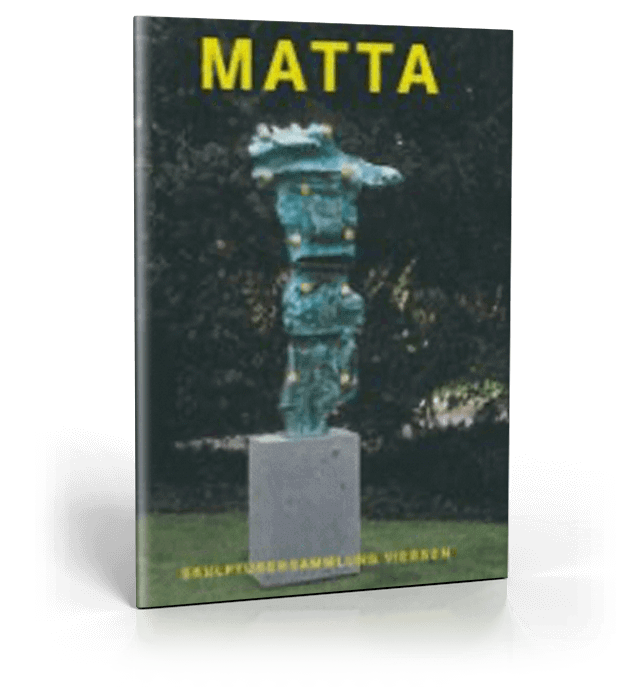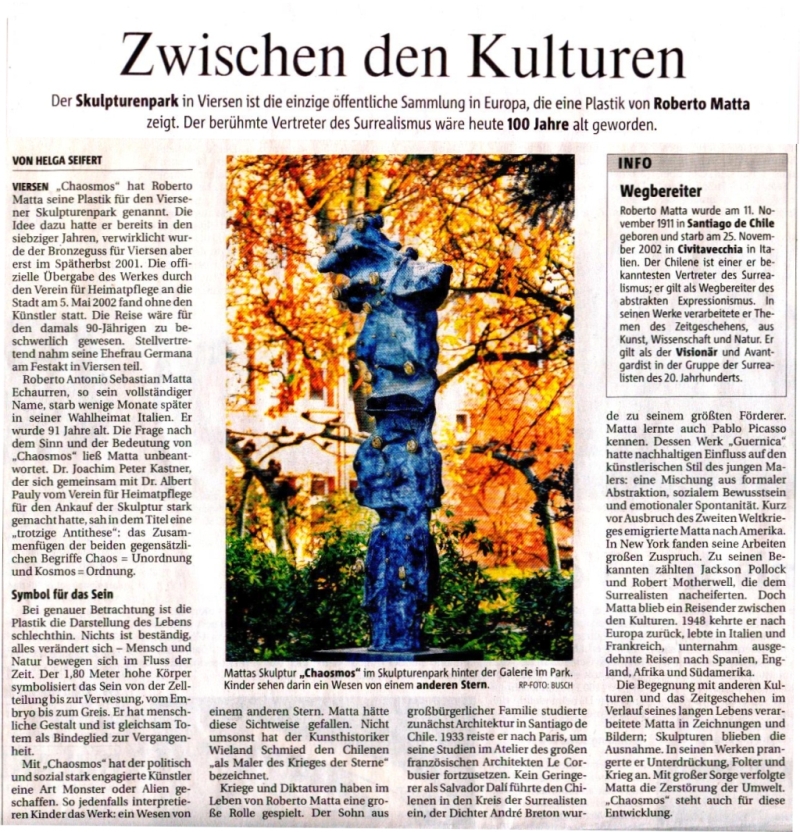Chaosmos
Skulptur von Roberto Sebastian Antonio Matta Echaurren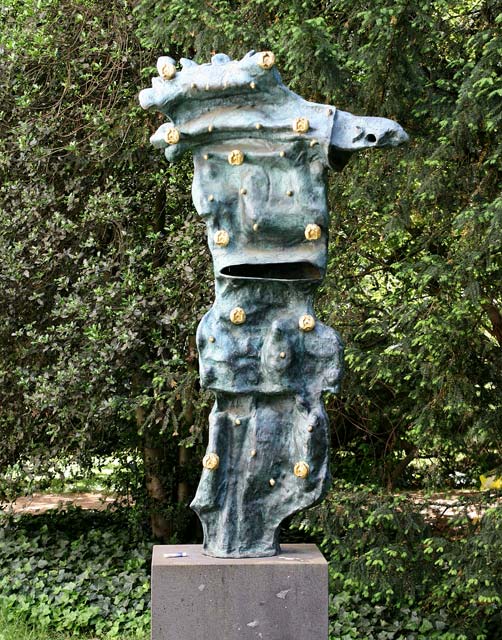
Informationen zur Skulptur
Künstler
Material
Bronze
Größe
180 x 92 x 38 cm
Entstehungsjahr
1970
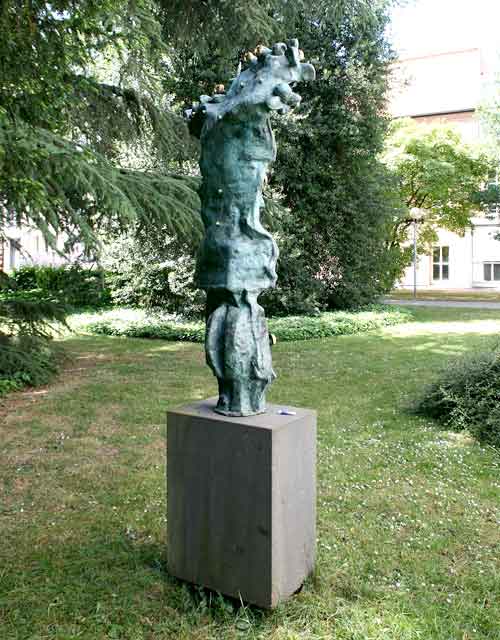
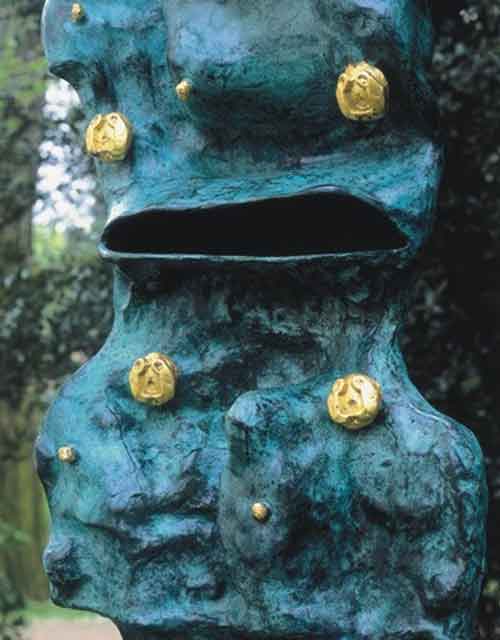

Für den im architektonischen Denken und Vorstellen ausgebildeten Matta geht es schon sehr früh - in den 30er Jahren - darum, im Gegenteiligen sich zu behaupten, sich vom festen Raumgefüge ebenso wie von geschlossenen, funktionalen Körperformen zu lösen und statt dessen fließende Verläufe und Bewegungen, veränderliche Körpergebilde und unvorhersehbare Gestaltungen zu suchen und festzuhalten. In Zeichnungen und Gemälden gelingt es Matta, Körper und Raum bzw. Räume in ein Kontinuum ständigen Wechsels momentan festgehaltener Übergangsformen zu bringen. Der Bildraum wird dabei zur Galaxis, zum Weltraum unterschiedlichster, vergänglicher Erscheinungen.
Der visionäre Charakter der im Verlauf vieler Jahrzehnte immer wieder neu entworfenen Raumbilder Mattas scheint im allgemeinen Bewußtsein bereits seine volle Akzeptanz gefunden zu haben, wenn es wahr ist, dass Matta der "Maler des Krieges der Sterne" sein soll (W. Schmied, 1981).
Der Bildhauer bzw. Plastiker Matta hat diese Möglichkeiten nicht. Ihm sind statt dessen Grenzen gesetzt. Das plastische Ding bleibt ein realer Körper im Raum und seine Einheit unterscheidet sich prinzipiell von allen gemalten Dingen seiner reichen Erscheinungswelt durch Vereinzelung und Geschlossenheit, durch seine Schwere und durch seine körperliche Begrenztheit.
Wie eine trotzige Antithese scheint da der Titel gemeint zu sein: CHAOSMOS, mit seiner Welt umfassenden Begrifflichkeit, zumal hier zwei gegensätzliche Aussagen, nämlich Chaos = Unordnung und Kosmos = Ordnung, spielerisch und doch mit überraschender Selbstverständlichkeit zusammengefügt sind. Das universelle Chaos und die universelle Ordnung sollen in diesem Körper zugleich zur Sprache kommen.
Und mehr noch: Das rationale Prinzip synthetischer Ineinsbildung antithetischer Prinzipien fällt hier zusammen mit dem surrealistischen Vergnügen am Zufall und seiner Möglichkeit einer überraschenden Zusammenführung willkürlich vorkommender, fremder Entitäten und der hierin liegenden Tendenz zu ausufernder Verschwendung. In den Gemälden ist dieser Tendenz leicht nachzukommen. In der Plastik muss Matta sich intelligent beschränken, um zu vergleichbaren Aussagen zu kommen.
CHAOSMOS tritt uns als eigentümlich zoomorph erscheinendes Gebilde von polypenhafter Körperlichkeit entgegen, dessen offensichtliche Hohlheit mit seiner abwechslungsreichen Oberflächengestalt deutlich kontrastiert.
Tatsächlich scheint dieser Körper nur aus Wandung zu Bestehen, die weich und wechselhaft quellend, geöffnet und durchkreuzt eindrücklich lebt. Ohne Stehvermögen folgt sie - nur flüchtig festgemacht - einer großen allgemein fließenden Bewegung. Auf der wechselhaft an- und abschwellenden Oberfläche sitzen, wie zufällig verstreut, kleine, an den vorspringenden Formteilen goldglänzend schimmernde, kugelförmige "Parasiten" und schauen uns als roßgesichtige Wesen an. Sie sind viel konkreter in Form und Blick als das große Gebilde selbst und wirken ornamental vereinfacht und funktionalisiert, in Gestalt und Ausdruck wie kleine Blutegel etwa auf der großen Fläche eines muskulösen Männerrückens.
Tatsächlich zeigt das Polypenwesen anthropomorphe Züge, ein übergroßes Gesicht mit riesig breitem Maul über einem winzigen Oberkörper und noch kleineren verkümmerten Beinen. Eben das, was unsere Körperlichkeit kennzeichnet, Selbständigkeit, symmetrische Bildung, Konstruktivität und Proportion, fehlen dieser Plastik ganz. Scheinbar zufällig, wenn auch sehr eindrücklich, wird über den großen, ausgeprägten "Gesichtsausdruck" der anthropomorphe Zug vorgebracht.
An olmekische Greisenkinder der vorkolumbianisch-mittelamerikanischen Kultur erinnert diese plastische Kombination unterschiedlicher Leiberscheinungen. Das greisenhafte Baby oder der babygesichtige Greis überspringen die Zeitabläufe im einfachen Sinne und werfen den Gedanken an eine Gleichzeitigkeit des Vergehens und Werdens auf. Als Gestaltung im transitiven Sinne sollte man diese Plastik auffassen. Das generative Moment liegt nicht nur im Aufeinandertreffen unterschiedlicher Körper, sondern im Körperlichen selbst als einem von unterschiedlichen Momenten durchdrungenem werdenden Bild, das wesentlich Vorgang und Erscheinung ist.
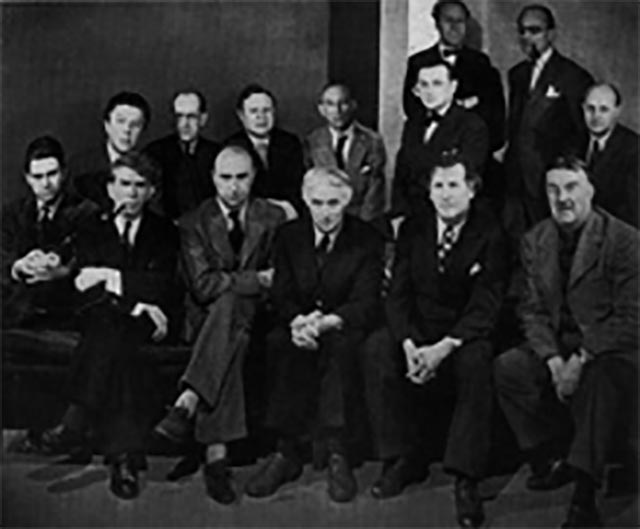
Gruppenfoto anläßlich einer Ausstellung in der Galerie Pierre Matisse, März 1942.
Von links nach rechts, untere Reihe: Matta Echaurren, Ossip Zadkine, Yves Tanguy, Max Ernst, Marc Chagall, Fernand Léger; obere Reihe: André Breton, Piet Mondrian, André Masson, Amédée Ozenfant, Jacques Lipchitz, Pavel Tchelitchew, Kurt Seligmann, Eugene Berman. Foto: Georges Platt Lynes aus: Matta, herausgegeben von Wieland Schmied, 1991
Roberto Sebastian Antonio Matta Echaurren
Seine Eltern sind spanisch-französisch-baskischer Abstammung. Matta wird auf einer Jesuitenschule erzogen und studiert anschließend Architektur an der Katholischen Universität von Santiago
1932
1933
1934
1936
1937
1938
1939
1940
1942
1948
1955
1956
1957
1959
1960
1963/64
1965
1967
1970/71
1974
1975/77
1981
1982
1985
1987
1988
1991
1993
1994
1997
1999
2000/01
Presse
Publikation "Roberto Sebastian Antonio Matta Echaurren"
Mit Bestandskatalog der Skulpturensammlung zum Zeitpunkt der Veröffentlichung.
Viersen 2002
Verkaufspreis: 10 €
ISBN 3-9805339-5-9

